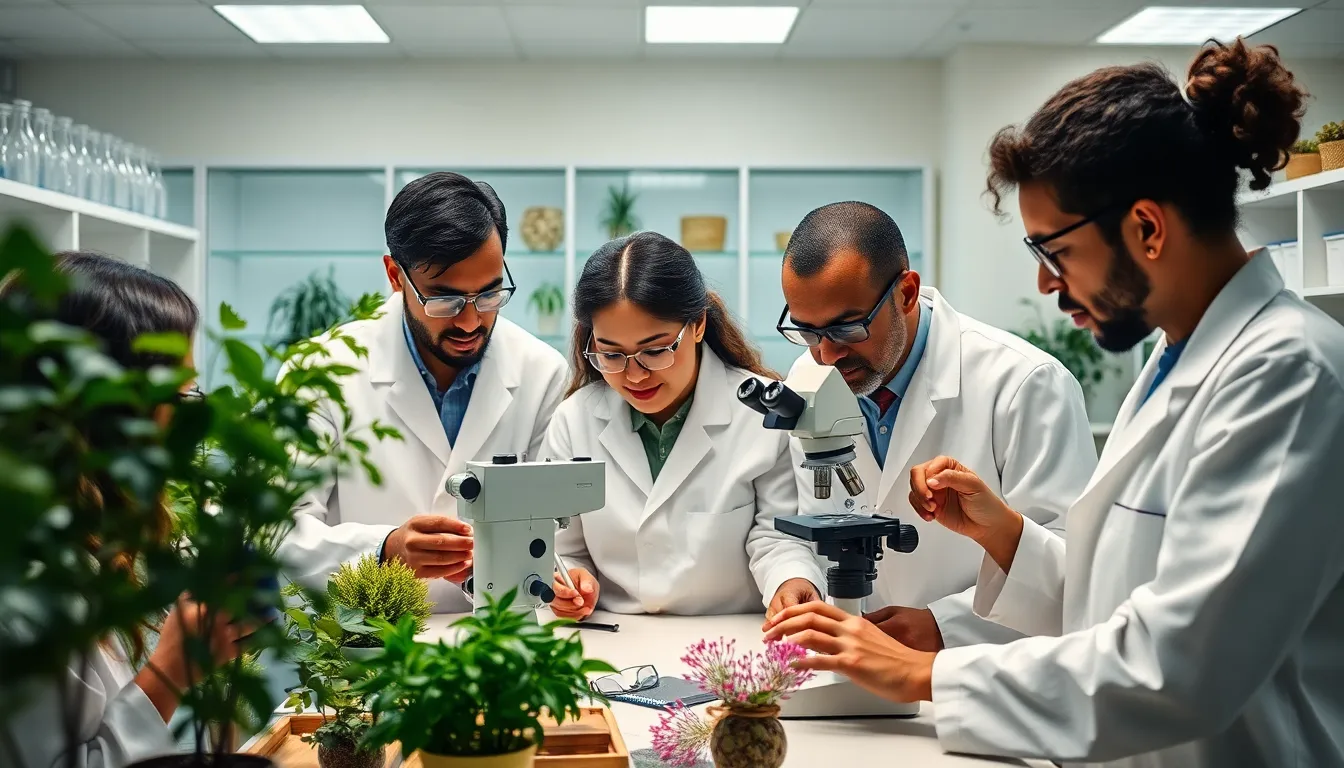Table of Contents
ToggleIn a world overflowing with species and subspecies, modern taxonomy is like the ultimate party planner for nature. It’s not just about slapping labels on plants and animals like they’re nametags at a conference. This scientific discipline dives deep into the relationships and characteristics that bind life together, helping us make sense of the chaos around us.
Understanding Modern Taxonomy
Modern taxonomy plays a vital role in the classification and organization of living organisms. This scientific discipline enables a deeper understanding of biodiversity through systematic categorization.
Definition and Importance
Taxonomy refers to the science of naming, describing, and classifying organisms. This field contributes significantly to biological research and conservation efforts. By providing standardized nomenclature, it minimizes confusion when referring to various species. Understanding taxonomic relationships reveals the evolutionary history among organisms, aiding in identifying traits shared among species. Clarity in classification promotes effective communication among scientists, enhancing data sharing across disciplines.
Historical Context
Historical developments in taxonomy trace back hundreds of years. Early systems relied on observable characteristics, leading to the classification method proposed by Carl Linnaeus in the 18th century. His hierarchical system established binomial nomenclature, which simplified naming conventions. Since then, advancements in genetics and molecular biology transformed taxonomy into a more refined science. By incorporating phylogenetic analysis, scientists now analyze genetic relationships, improving the accuracy of classifications and adapting to new discoveries in the tree of life.
Core Functions of Modern Taxonomy

Modern taxonomy serves essential functions in understanding and organizing biological diversity. It helps categorize organisms into groups based on their characteristics and evolutionary relationships.
Classification of Organisms
Classification organizes living organisms into hierarchical groups, facilitating systematic study. Taxonomists classify organisms into categories such as domains, kingdoms, phyla, classes, orders, families, genera, and species. This structured classification improves communication among scientists and enhances research collaboration. For instance, categorizing plants according to their evolutionary lineage helps identify similarities and differences more effectively. By utilizing phylogenetic trees, researchers visualize how species are related, showcasing their evolutionary paths. Overall, classification plays a fundamental role in biological research, enabling clear understanding of biodiversity.
Naming Conventions
Naming conventions ensure consistency and clarity in identifying organisms. Taxonomy employs binomial nomenclature, a system developed by Carl Linnaeus that assigns each species a unique two-part name. The first part indicates the genus, while the second part refers to the specific species. This method reduces confusion, especially when multiple species exist with similar names. Using standardized scientific names fosters international collaboration among researchers. An example includes the name Homo sapiens for humans. Such conventions not only facilitate accurate communication but also aid in conservation efforts by providing a clear identity to each species.
Tools in Modern Taxonomy
Modern taxonomy utilizes various tools that enhance the accuracy and efficiency of species classification. Two prominent tools include genetic sequencing and digital databases.
Genetic Sequencing
Genetic sequencing plays a critical role in modern taxonomy, offering insights into the genetic makeup of organisms. Techniques like DNA barcoding allow researchers to identify species based on unique genetic markers. Sequencing helps uncover evolutionary relationships among different taxa, refining classifications. Data from genetic analysis can reveal hidden diversity within species, illustrating the importance of genetic variation. Examples of applications include identifying cryptic species that appear similar but are genetically distinct. This method significantly improves understanding of lineage and speciation events.
Digital Databases
Digital databases have revolutionized the way taxonomic information is stored and accessed. Large-scale databases like GenBank and the Catalogue of Life compile vast amounts of species data. Taxonomists can easily retrieve information on names, descriptions, and classifications from these centralized resources. These databases facilitate collaboration among researchers worldwide, fostering a global approach to biodiversity studies. User-friendly interfaces and search functionalities enhance usability, allowing quick access to relevant data. Such digital resources ensure that updated taxonomic information is available to scientists, supporting ongoing research and conservation efforts.
Applications of Modern Taxonomy
Modern taxonomy significantly contributes to various fields. It plays an essential role in biodiversity conservation and agricultural improvements.
Biodiversity Conservation
Taxonomy aids in biodiversity conservation by identifying and classifying species at risk of extinction. Recognizing the relationships among organisms helps prioritize conservation efforts, ensuring the protection of critical ecosystems. Accurate species identification promotes effective habitat management, making it easier to implement strategies that preserve endangered species. Additionally, taxonomic research uncovers hidden diversity, revealing species that may not yet be described. These findings emphasize the need for protecting ecosystems that harbor unique life forms. Understanding cryptic species and their roles in ecosystems fosters a deeper appreciation for biodiversity, encouraging public support for conservation initiatives.
Agricultural Improvements
Modern taxonomy enhances agricultural practices by supporting crop improvement and pest management. Classifying plant species accurately allows breeders to streamline the selection of crops that yield higher returns. Knowledge of plant family relationships aids in identifying beneficial traits in closely related species. Furthermore, taxonomy helps understand pest and disease interactions, leading to better management strategies. By categorizing pest populations, farmers can implement targeted control measures that reduce reliance on pesticides. Through improved classification, researchers develop sustainable farming practices that contribute to food security. Effective taxonomy also assists in the conservation of genetic resources, vital for future agricultural innovations.
Challenges Facing Modern Taxonomy
Modern taxonomy faces several challenges that can hinder its effectiveness and progress. These challenges stem from a variety of sources, impacting research and the classification of organisms.
Funding and Resources
Limited funding restricts access to essential tools and research opportunities within modern taxonomy. Many institutions rely on grants, which may not be sufficient to support comprehensive studies. Financial constraints often affect the ability to maintain and update digital databases. These databases play a critical role in sharing taxonomic information globally. Researchers frequently struggle to acquire state-of-the-art technology needed for genetic sequencing. Competing priorities may divert funds away from taxonomy toward other scientific disciplines, further limiting resources.
Technological Limitations
Technological limitations also pose significant challenges for modern taxonomy. Instrumentation for genetic sequencing and data analysis can be expensive, restricting its use in low-resource settings. Many researchers may lack training in advanced technological tools necessary for accurate species identification. Outdated software and databases hinder collaboration among scientists, affecting the accessibility of taxonomic information. Evolving technologies require continuous learning; thus, taxonomists often must invest time to keep pace. As a result, some taxa may remain poorly understood due to gaps in available technological resources.
Modern taxonomy stands as a cornerstone of biological sciences. Its systematic approach to classifying and understanding the relationships among organisms enhances biodiversity research and conservation efforts. By integrating advanced tools like genetic sequencing and digital databases, it continues to evolve and adapt to new challenges.
Taxonomy not only aids in the identification and classification of species but also plays a crucial role in addressing pressing environmental issues. As it advances, the discipline fosters collaboration among scientists worldwide, ensuring that the rich tapestry of life is documented and preserved for future generations. The ongoing commitment to refining taxonomic practices will undoubtedly yield significant benefits for science, conservation, and agriculture.





